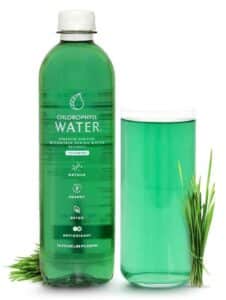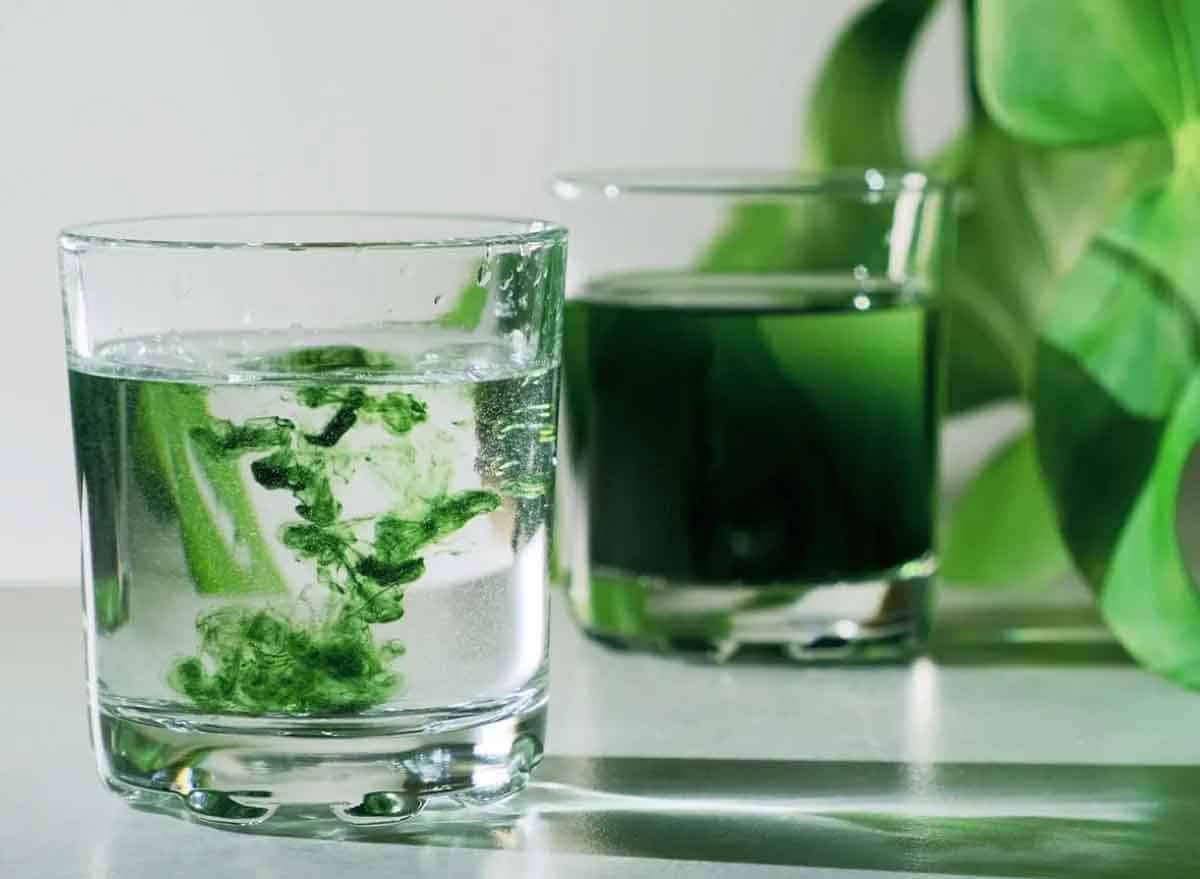But this TikTok trend got one thing right says EMMA BECKETT
If you follow health trends online, you might have heard about “chlorophyll water”. Claims range from clearing your skin, stopping body odour, increasing energy and oxygen, to detoxing your liver and preventing cancer.
Chlorophyll water is sold as a liquid concentrate or already mixed with water. Numerous TikTok videos claim its health benefits.
Then there are celebrity endorsements for chlorophyll water, including from Kourtney Kardashian on her lifestyle channel.
So, what is chlorophyll water? And is it really a healthy choice?
Chlorophyll is the pigment that gives plants (and some algae and bacteria) their green colour. It is vital for photosynthesis, the process that uses sunlight to produce oxygen and chemical energy stored in the sugar glucose.
At the heart of most chlorophyll is magnesium – an essential nutrient for humans – needed for healthy nerves and muscles, regulating blood sugar and blood pressure, and building bones, proteins and DNA.

First, chlorophyll doesn’t dissolve in water. So, what you get in these products isn’t “natural from plants”. It’s the molecule chlorophyllin. Chlorophyllin is made from chlorophyll by a process called saponification.
Essentially, this involves reacting it with sodium hydroxide and making a smaller molecule that is water-friendly. Then, to help it stay bright green, another reaction replaces the magnesium with copper, which is much more stable.
A more accurate name for these products would be “sodium copper chlorophyllin water”. But that’s not quite so marketable.
Just because it’s been converted from its natural form, doesn’t make it automatically unhealthy. So how do the health claims stack up?
There is lots of evidence about diets high in chlorophyll being healthy. But, since evidence is mostly diets high in green plant foods, this can’t be directly translated into water containing a processed derivative of one little part of green plants.
There is some evidence that comes from the extracted, processed form (chlorophyllin). But that’s mostly from animal or lab studies. These involve very high concentrations that would need you to drink dramatic levels of chlorophyll water to match the doses, or to inject it deep into your cells. To be clear, please don’t do either.
There are also some (mostly very small) studies about its impacts on skin and its use as a deodorant, but most of these are about applying chlorophylls and chlorophyllins directly to the skin. You don’t need to be a scientist to know that’s not the same as drinking it in water.
How about boosting your energy and oxygen? It might make sense on simple logic because this is what it does in plants, and the pigment’s similarities to haemoglobin.
But there is no data to support these claims.
Most importantly, the main ingredient in chlorophyll water is water.
This is definitely an essential nutrient, and definitely something we want to encourage people to drink more of.
By turning to chlorophyll water, people may be simply increasing their water intake, and decreasing their intake of sugary drinks or alcohol. Improving hydration alone could explain their reports.
Excessive consumption (multiple doses a day) could cause some side effects such as nausea, stomach upsets, discolouring your poo and staining your teeth.
Like all supplements, there is a risk chlorophyll water may interact with medications.
But, stop and think about the potential indirect downsides of drinking chlorophyll water. It’s expensive. So it could be an expensive way of increasing your water intake if you think you’re not drinking enough, given tap water is safe and cheap.
Even if there are any benefits, you could get these benefits from eating actual plant foods. So the money and time you spend buying chlorophyll water could be taking money and time away from other food and drink choices that could have much bigger health benefits.
If you like it, can afford it, and don’t have any medication risks, the choice is yours.
You could also try other ways to increase your chlorophyll intake, such as eating more green veggies. You could add cheaper things to water to make it appealing, such as mint, fruit or teas.
These options could be cheaper and have even better health impacts, but probably won’t get as many views on TikTok.
Emma Beckett is Senior Lecturer (Food Science and Human Nutrition), School of Environmental and Life Sciences, University of Newcastle. This article is republished from The Conversation under a Creative Commons licence







Click here to change your cookie preferences